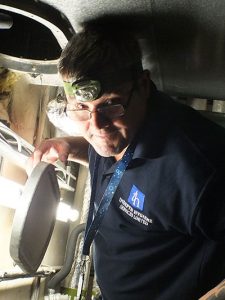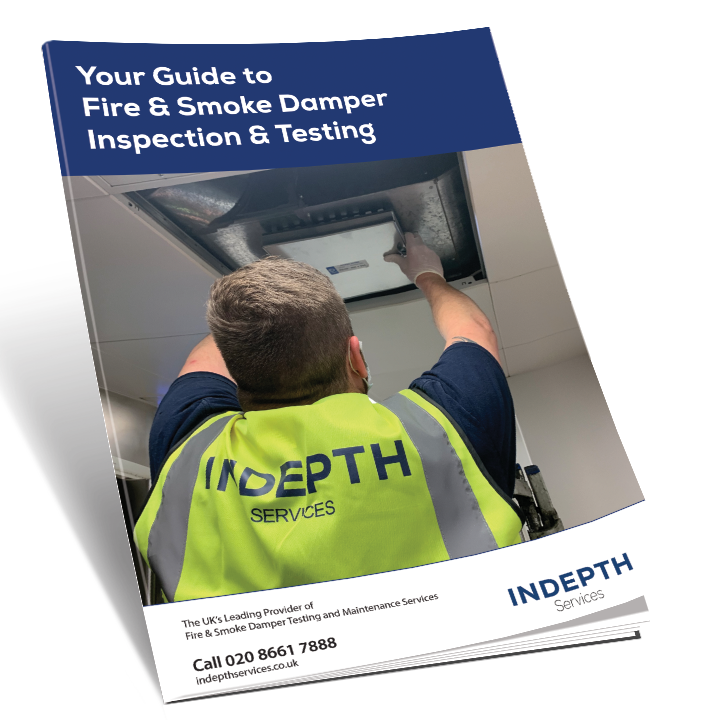During a fire damper inspection, a visual assessment of your fire dampers will be carried out to highlight any surface damage to the fire damper.
The team will typically be looking for:
- Confirmation that the damper is installed and matches the schematics or plans available
- Visual signs of corrosion or damage
- Obstructions that would prevent the damper closing in an emergency situation
- Installations requiring repair – where the fire integrity of the surrounding wall or ductwork has been visibly damaged or is missing.
Confirming damper installation

If a building has undergone alterations, or an extension has been added, or repair work has been carried out, fire dampers are occasionally re-situated. We will check the location of all fire dampers against your current records to ensure you have an up-to-date inventory. All fire dampers will be asset tagged and clearly labelled for identification against testing records. This is a necessary requirement for compliance.
Corroded fire dampers
If a fire damper has been exposed to humid or damp conditions it is possible that the main frame and structure will become corroded. The deterioration of the damper housing can cause it to fail, in the event of an emergency. Our team will provide photographs of your dampers to enable you to review our findings.
Corroded fire dampers should be replaced as soon as possible. We can assist with all necessary fire damper remedial works.
Obstructions in fire dampers
Building and related trade contractors are often unaware of the purpose of fire dampers and the need for there to be a clear operating space for the dampers to function correctly. Our team has first-hand experience of finding fire dampers being held open with mastic tubes, seeing networking and electrical cables running through the fire damper, and observing other obstructions.
When a damper is activated it closes fully, forming a sufficiently tight seal to prevent the spread of smoke and/or fire. If the aperture of the damper is obstructed, or the damper ‘doors’ are held open in any way, the damper will not operate as expected. The worst-case scenario is that the damper will not function at all, and at best it will close, but insufficiently to contain the smoke or fire effectively.
Simple obstructions will be removed by our team. If cabling or other services have been installed ‘through’ the damper, we will note this on our report and discuss with you options for remedying the issue. Our team will not remove any obstruction unless it is safe to do so. Network cabling, electric cables and any other similar service will not be removed without a full health and safety risk assessment and your prior agreement.
Installations requiring repair
As part of our service, we identify dampers that are installed incorrectly or in need of repair. A fire damper should not interrupt the integrity of fire compartment walls; for instance, if installed in ductwork, it should be positioned correctly for the direction of airflow, it should be accessible from an access hatch for inspection purposes and it should completely fill the void – a damper with visible ‘gaps’ around it will not prevent the spread of fire and/or smoke. We have even found a damper installed the wrong way up!
Our team will make you aware of any installations that, based on a visual inspection, require repair or reinstallation.

